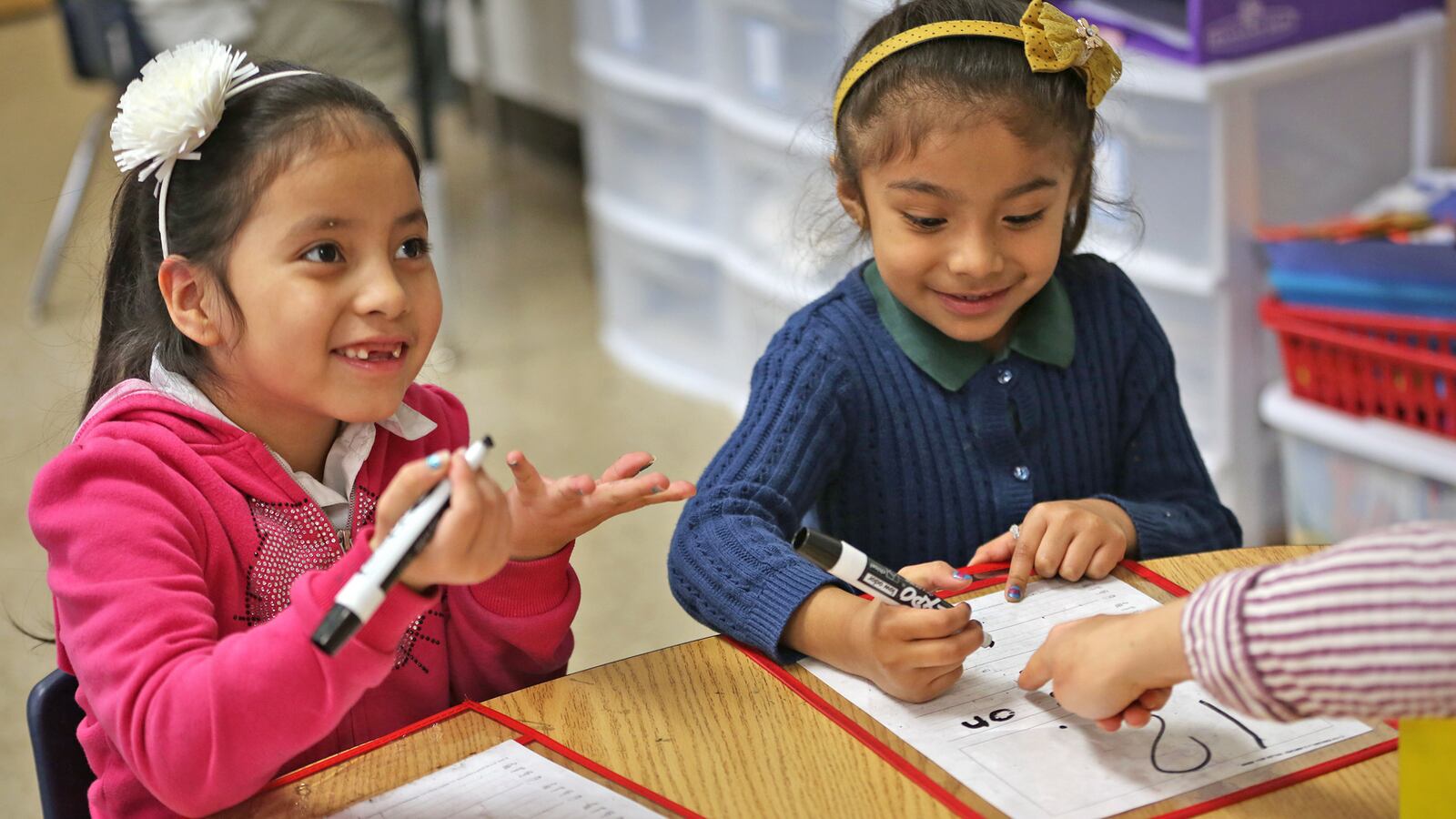Native Spanish-speakers could soon have an opportunity to take Indiana state tests in their first language.
Indiana education officials are proposing offering future state math and science tests in Spanish — and possibly other languages — as part of their plan to comply with new requirements of the Every Student Succeeds Act, which replaced No Child Left Behind in 2015.
Supporters of native language tests say, among other benefits, they can be far less jarring for children than sitting them in front of a test written in a language they can’t understand.
“The whole thinking is (English-learners) would do better if we’d give them access,” said Trish Morita-Mullaney, a researcher and professor at Purdue University who specializes in English language learning. “We don’t want you sitting blankly in front of an English test, we want you to at least have an opportunity to do well.”
The proposal says the translated tests could be available as early as spring of 2019, in time for the first administration of ILEARN, the test currently in the works to replace ISTEP.
While state officials said they’d focus on Spanish, the state’s ESSA plan says they anticipate adding three others to the mix. One option could be Burmese, which has a strong presence in four districts across the state, including some in Marion County.
About 72 percent of Indiana students learning English speak Spanish at home. Overall, Indiana’s 50,677 English-learners speak more than 270 languages, representing the second-fastest growing English-learner population in the entire country.
Morita-Mullaney said she is happy to see Indiana explore native language tests, but she hopes they take it slow and learn from of others. Some past mistakes include trying to test in too many languages (a costly, time-consuming endeavor) and trying to make the new tests happen before proper vetting and before schools collect input from students and families.
California, Texas, New York and Oregon have all, at some point, given native language tests, Morita-Mullaney said. And while it’s not a new idea, it’s still fairly uncharted territory. Based on a 2016 report from Education Week, fewer than 12 states test in languages other than English. Some states, like Florida, are trying to eschew the native language requirement altogether.
But one big piece missing from Indiana’s plan, Morita-Mullaney said, is how the state plans to ensure the test measures what the state intends it to measure — known in the test design world as “construct validity.”
Put another way, if a student is taking a math test in English, but they are fluent in Spanish, is the test measuring how well they know math, or how well they know English? That specific idea is part of the rationale for using native language tests, but there’s a related problem, Morita-Mullaney said: If a native Spanish-speaker is taught math in English, and tested in Spanish, is that also a fair and accurate test?
“If the original instruction was in English, what guarantee do we have that they actually understood it?” Morita-Mullaney said. “Are we testing the language, are we testing the content or both? That component is not in the (state plan).”
A way around this dilemma is through dual language instruction, where students are taught both in English and another language. But while those classes are growing in popularity, they make up a small minority of programs in schools, and many of them are designed to serve students who already know English, rather than students who need support in English and their home language.
Hopefully, Morita-Mullaney said, Indiana will try out native language tests first for small groups of students to make sure they truly provide an advantage to English-learners and function as intended. And ideally, she added, that would come with a renewed investment in bilingual education.
“It’s a wonderful effort, but I remain concerned that we have not examined construct validity,” she said. “But I don’t want construct validity to be used as an argument to not do it … there’s so much we don’t know, and there’s so many states that have done this the wrong way. We need to learn from their pitfalls.”
The move toward using native language tests is indicative of a larger trend of inclusivity in ESSA. Before, students learning English tended to be an afterthought in state education policy. Now, not only are native language tests on the table, but English-learners also have a larger piece of the state’s A-F grade formula.
“This is the first time (English-learners) have had a prominent place in our accountability system,” said Maryanne McMahon, an Indiana State Board of Education member and assistant superintendent in Avon.
There are also safeguards in place in the new rules to ensure even top-rated schools are taking care to educate all students. Going forward, schools could be be singled out for extra support from the state not just if they are rated a D or an F, but also if smaller groups of students, such as English-learners, are struggling.
“You can still have an A-district not meeting EL goals,” Morita-Mullaney said. “People think, ‘We’re an A, we’re good,’ but what it does is it masks disparities. So when you start to look more closely, you see that they’re an A-district, but gee, their English-learners are doing crummy.”
The state is on track to submit its ESSA plan to the federal government in September, and the state board is set to discuss the issues further next month.
Read more about Indiana’s ESSA journey here.

